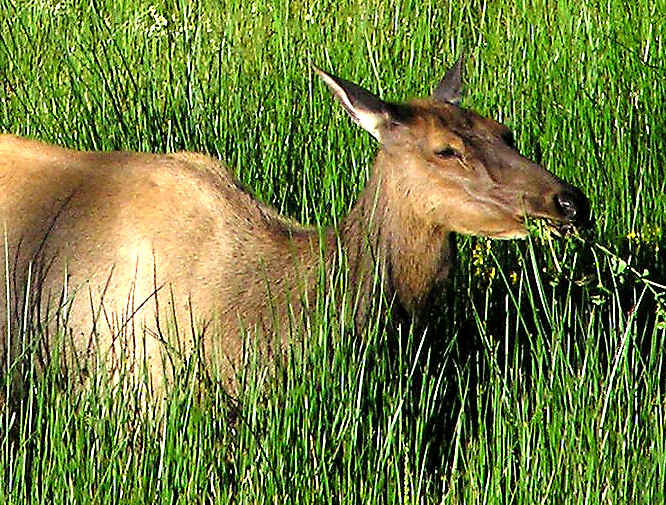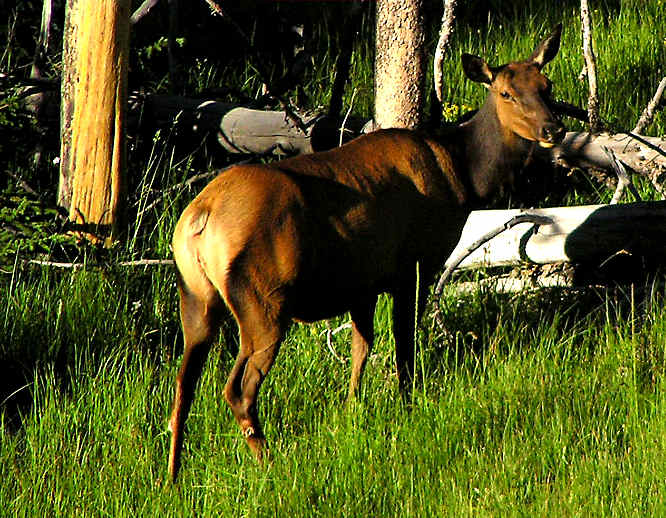Where to see Yellowstone Wildlife
You cannot guarantee to see large mammals on your visit to Yellowstone National Park but you can increase your chances by going to certain locations. In marshy areas along rivers you may spot moose, and in grasslands you may find elk and bison.

You will find a meadow between Madison and Norris. This is where I usually spot buffalo. My favourite wildlife viewing area in the northern part of the park is the Lamar Valley. It is a good area to look for wolves, coyote, bison, antelope, bears, bighorn sheep, osprey, eagles and foxes.
There are times I have driven through this area and seen nothing. Hayden Valley as an ideal place to look for wildlife. Here the road follows the Yellowstone River and you may see such grazing animals as elk, moose, and bison. Waterfowl such as ducks and white pelicans can often be seen in the marshy areas. As you tour the park by car look out for other cars that have stopped in strange locations. It is normally a very good sign that something interesting is happening, usually involving wildlife.

Wildlife Photography Tips
You need a long lens on an SLR to get good close up photographs. A 70mm - 300mm zoom lens is ideal. These long lenses have to be held very steady otherwise your photos will come out blurred due to camera shake. You cannot use a tripod in a car or van. Treat your self to a bean bag that you can use to rest the long lens on. Put the bean bag over the vehicles windows or on its bodywork. Professional photographers have special tripods that clamp onto their vehicle.
Buy and fit a polarised filter to all your lenses. It protects them and also makes the sky in your photographs a richer darker blue. Buy extra batteries. You are a long way from a shop. Ask the hotel or lodge reception if their electricity turns off at certain times of the day. Make sure you recharge all your camera batteries when the power comes back on.
Learn how to bracket your photographs. Ideally when you take a photograph your camera will automatically take three photographs of the same thing at the same time. One photograph will be over exposed, one will be what the camera thinks is the correct exposure and the last one will be under exposed. This way you will never have a photograph rendered useless due to exposure problems. As you are going to take lots and lots of photographs make sure you have plenty of memory disks.
Travel books

